This is a guest blog post by Holly, a school-based SLP, all about how to use ASHA Evidence Maps in your speech therapy continuing education!
ASHA Evidence Maps
Today, we’re talking all about ASHA Evidence Maps! Let’s explore what sets this tool apart from other continuing education resources, why these maps are valuable, and how to use them effectively.
In case you missed it, here is a podcast episode providing a Quick Review of Evidence-Based Practice (EBP) and a blog post discussing the use of PICO Questions in Assessment.
Story Time
Back in 2005, ASHA surveyed its members to find out what kind of resources were being used to make clinical decisions.
Of the respondents, 76% turned to colleagues, 56% relied on continuing education, and 20% reported scholarly journals.
When clinicians were asked about barriers that were impacting their ability to engage in evidence-based decision making, the most common responses were: insufficient time (79%), cost of continuing education (59%), and concerns with the evidence — that it’s lacking (53%), conflicting (48%), or not necessarily relevant to clinical practice (48%).
So if you can relate to at least one of these struggles, you’re not alone!
Enter: ASHA Evidence Maps
If you’re thinking, “That sounds familiar!” but “Honestly, I get all the ASHA EBP-related resources mixed up…” then this next part is for you:
ASHA Evidence-Based Systematic Reviews are released each year by ASHA’s N-CEP along with ASHA members or committees. They feature high-quality external scientific evidence related to different domains of communication.
ASHA Evidence-Based Practice Toolkit is a hub of PDFs, breaking down EBP into a step-by-step process, rather than this big, nebulous buzzword.
ASHA Practice Portal is a database of reference sheets related to communication disorders. This is comparable to how a graduate-level class would break down content related to a certain condition (e.g., Spoken Language Disorders).
ASHA Evidence Maps are searchable, online research summaries that help you navigate the latest information related to the clinical population you work with. These are especially nice for starting broadly and then narrowing down your clinical questions as you go, with lots of ways to customize your search!
The Evidence Maps help break down lots of the barriers mentioned above by centralizing research summaries all in one place for free. Yes please! ✋ Plus, it makes journal articles more accessible by evaluating the quality of the sources and outlining applications to clinical practice.
How to Use Evidence Maps Like a Pro
One of the biggest perks of using the maps is that you can browse through relevant resources, rather than endlessly search keywords. In my experience, it has helped solve the problem of “you don’t know what you don’t know!” since you can start broad and narrow down based on what evidence is currently available in a given map.
Here are some tips to use the evidence maps like a pro:
1. Start with the list of Evidence Maps.
Select a map based on the population you’re working with, such as an area of practice or specific communication disorder.
2. Refine your search.
Focus on a specific Practice Area (Assessment, Screening, Service Delivery, or Treatment). You may also be prompted to filter your findings by Client Characteristics, Age, Condition, Special Considerations, Domains of Communication, Setting, or Publication Date Range.
3. Explore different types of evidence.
You can view All Articles, or focus on External Scientific Evidence (systematic reviews or meta-analyses), Clinical Expertise (clinical practice guidelines), or Client Perspectives (input from clients and their families on services).
You may notice that each map has the most articles under the “external scientific evidence” tab, followed by “clinical expertise” — which is a sign that our field could really benefit from amplifying the voices of the students and families we serve.
4. Enter search terms.
If you need to narrow things down further, add keywords to your search, and voila! You’ll have evidence summaries available at your fingertips.
Now, let’s dive into an example!
The Evidence Map for Spoken Language Disorders includes summaries for 176 different articles, 155 of which are external scientific evidence, 29 are labeled as clinical expertise, and 4 pertaining to client perspectives.
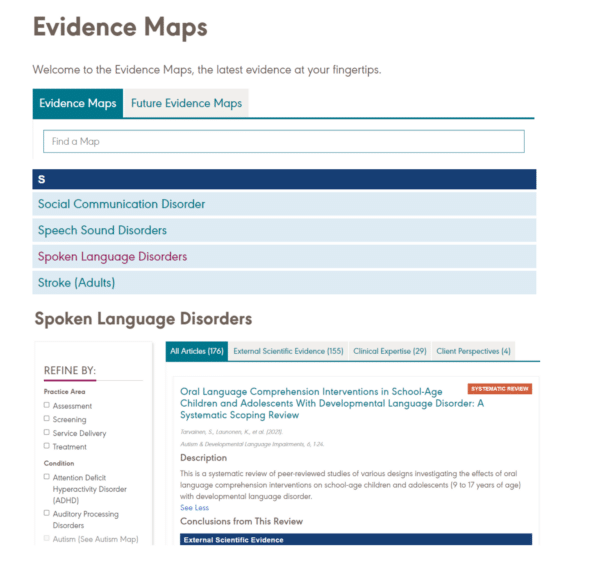
Let’s imagine I’m seeking continuing education related to language outcomes for secondary students with Down Syndrome on my caseload.
After sifting through the articles, I found a systematic review and meta-analysis by Smith et al. (2020) that looks relevant.
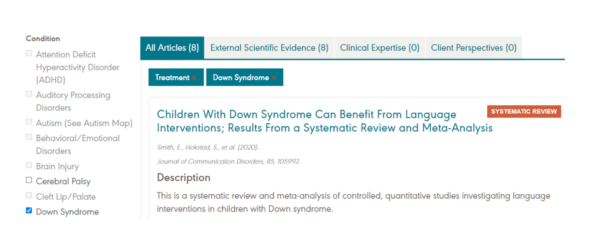
The Article Summary
Here are some things I would look for in the article summary:
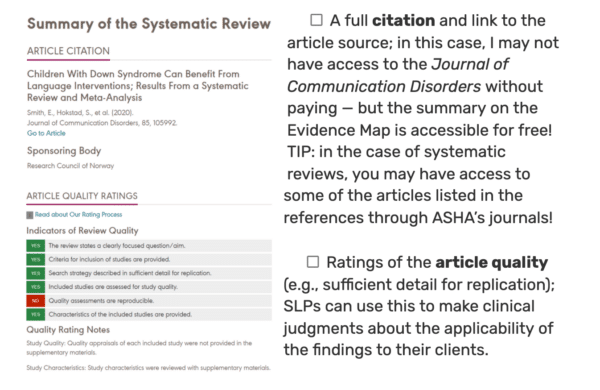
The Article Snapshot
This includes details about the research question, population, intervention, and studies from the review. In this example, Smith et al. (2020) sought out the common characteristics of effective language intervention for children with Down Syndrome (birth to 18 years).
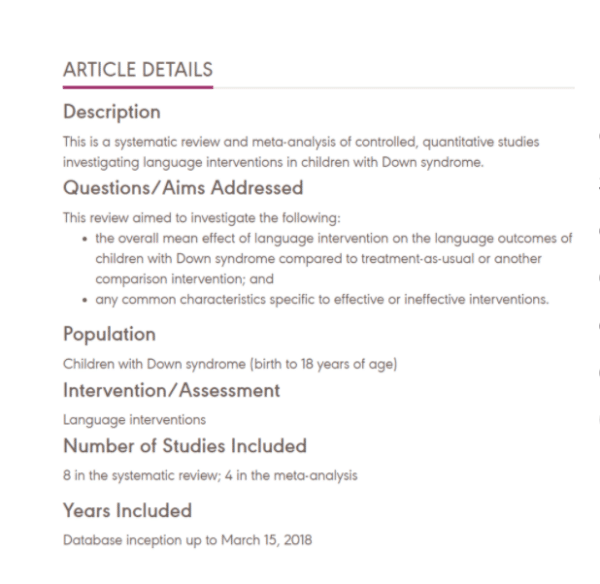
Conclusions
This section discusses if and how the approaches from the article are supported by the evidence. This summary suggests interventions (including those with morpho-syntax and phonology targets) can have large gains in language outcomes.
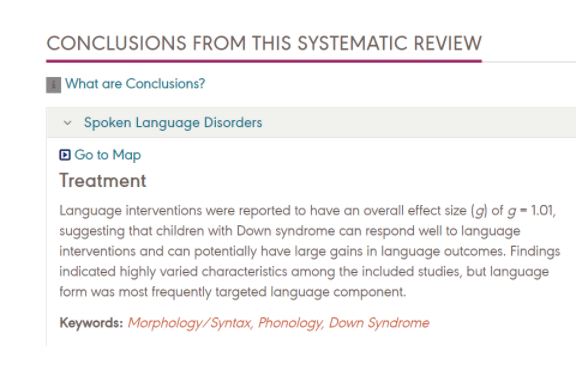
After reviewing the different pillars of evidence available (e.g., external scientific evidence, clinical expertise, client perspectives), don’t forget the importance of using clinical judgment to see how the evidence applies to a specific client, setting, and situation!
Note: As the literature in our field is in the process of growing, it’s up to us to maximize what evidence is available today!
Ready to give the maps a try? Fill us in on how it goes for you!
If you have any questions along the way, feel free to chime in below 👇
References
Miake-Lye, I. M., Hempel, S., Shanman, R., & Shekelle, P. G. (2016). What is an evidence map? A systematic review of published evidence maps and their definitions, methods, and products. Systematic reviews, 5(1), 1-21.
Mullen, Robert. “Evidence-Based Practice: Opportunities and Challenges for Continuing Education Providers,” American Speech-Language-Hearing Association. Accessed September 2021.
Smith, E., Hokstad, S., & Næss, K. A. B. (2020). Children with Down syndrome can benefit from language interventions; Results from a systematic review and meta-analysis. Journal of Communication Disorders, 85, 105992.
ASHA Evidence Maps Tutorials: YouTube Playlist



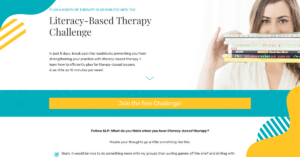
Reader Interactions